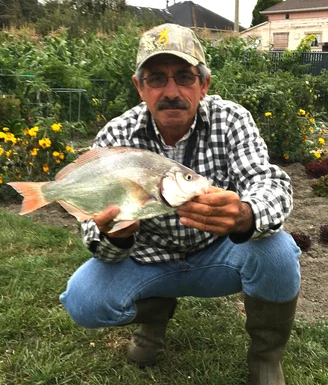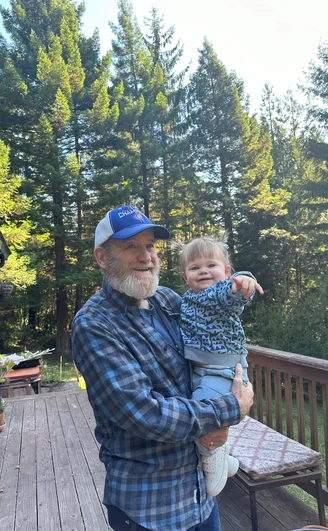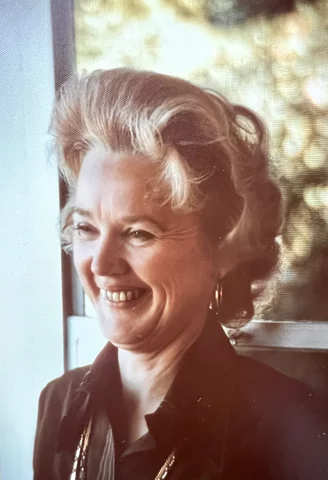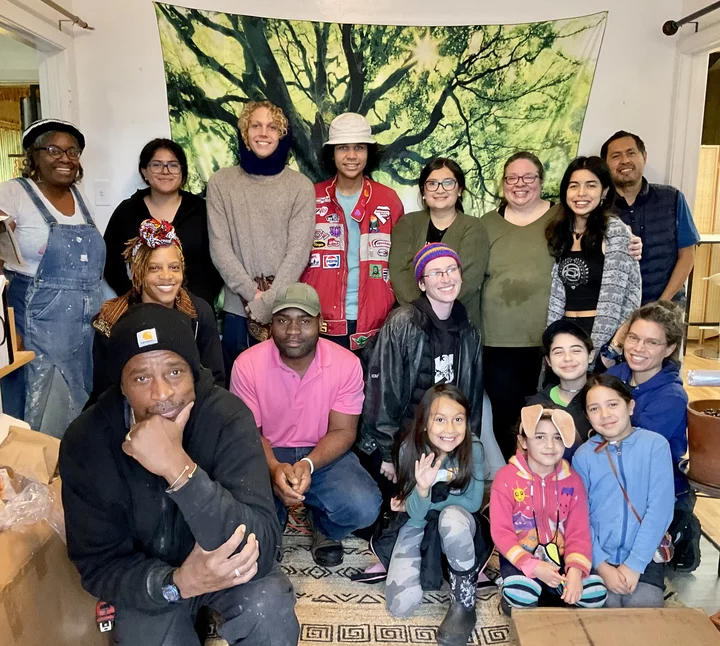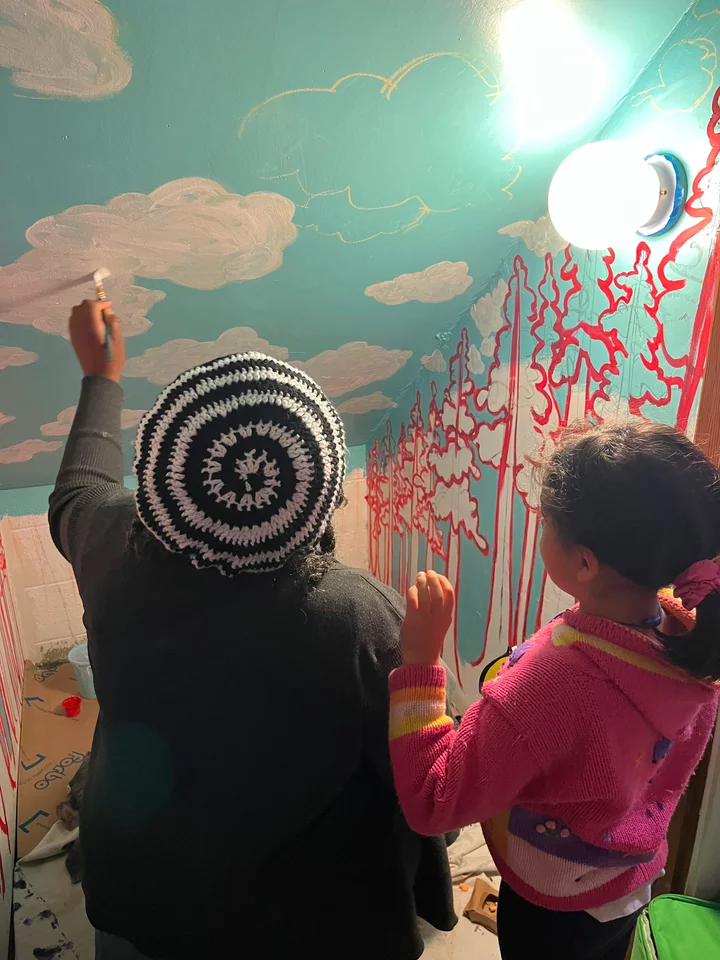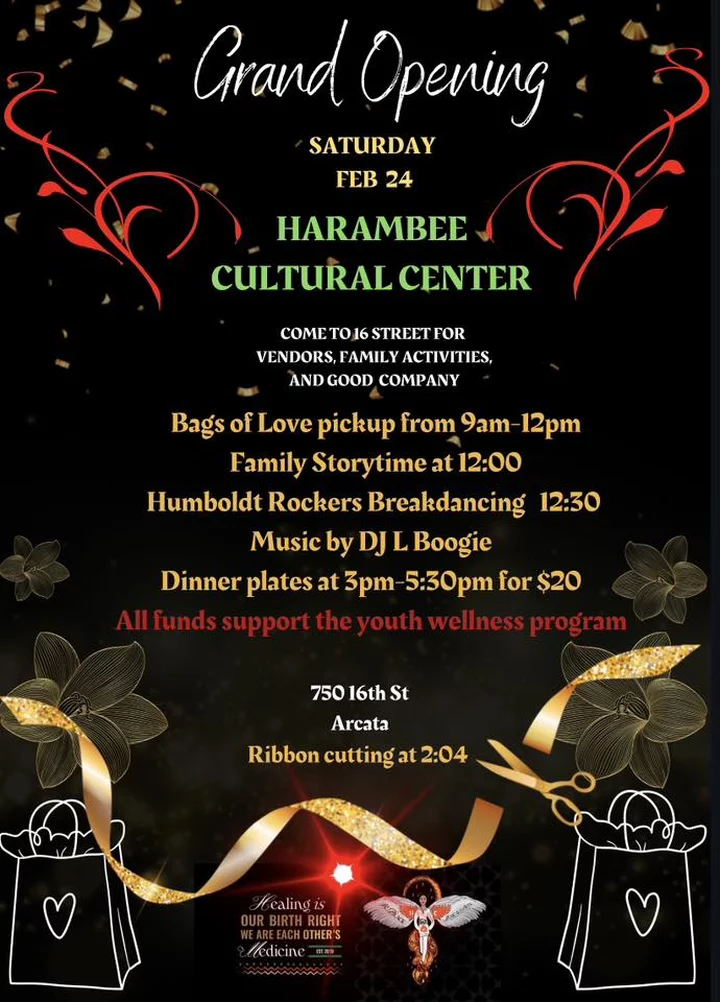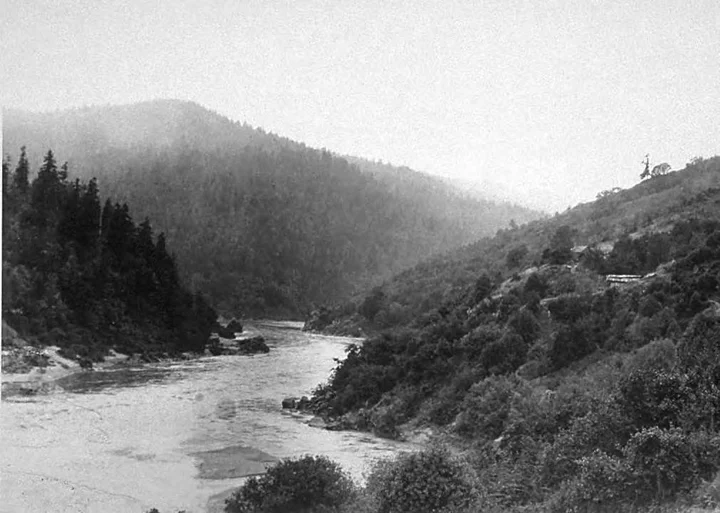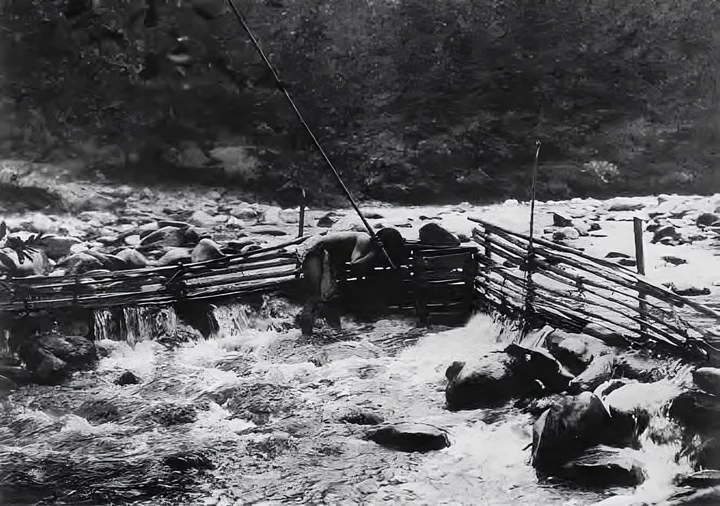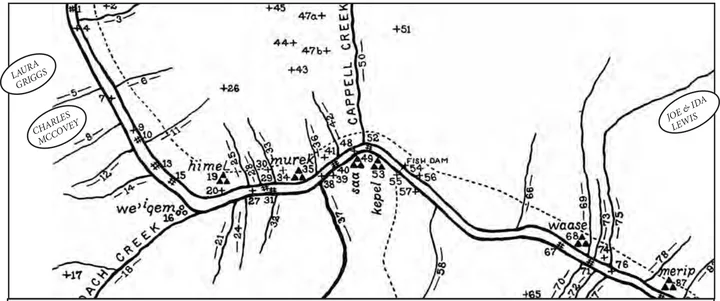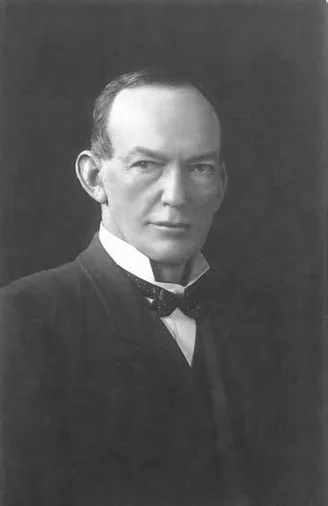OBITUARY: Demos Barcelos, 1957-2024
LoCO Staff / Monday, Feb. 26, 2024 @ 6:55 a.m. / Obits
It is
with profound sadness that we announce the passing of Demos Barcelos
on February 20, 2024. He was born on March 9, 1957, in Hanford,
Calif. and moved to Humboldt County as a young child where he lived
the rest of his life.
Demos spent his early years working on his family’s ranch helping raise most of their food. He and his brother Tony were expected to toe the line, pull their weight and work hard every day but would “raise a little Hell” with friend Gene when their dad was not home. They would shoot BB guns and ride motorcycles inside the house and as teenagers, borrow dad’s car without permission. Above all, Demos was taught to be hard-working, honest, self-reliant and to always excel at everything he did. All these traits earned him respect from anyone who worked with him on the job or on projects.
Demos started his work career at Louisiana Pacific in Carlotta working nights and going to high school during the day. He was then hired by The Pacific Lumber Company (Palco) in 1977 and worked 38 years in the lumber industry. He held many roles including Tableman, Grader, Sales Coordinator, and advancing to Quality Control Manager. He had mentors he greatly admired and said they were the best in the industry including John Campbell, Jack Coleman, Buzz Sarvinski, Gary Macy and Ron Bush to name a few. After Palco and HRC, Demos decided he needed a change, so he started at Fortuna Ace Hardware in 2016 working in the lumber yard and assisting customers. He had much respect for owners Jack Rieke and Jerry King and loved his coworkers often telling them that he did. He said he had his Palco “family” and his Ace “family” and the outpouring of love and prayers from both during his illness was inspiring. To those who reached out, please know Demos felt the love.
In his younger years, Demos owned countless muscle cars buying and selling so many he was warned he needed a used car dealer’s license. He loved cruising town with loud music playing on the best stereo money could buy, riding 3-wheelers at the dunes, camping and fishing trips, hunting, beach parties, crabbing, and riding motorcycles and 4-wheelers. One day when he was cruising town, he asked a girl named Debbie to cruise with him. They drove around for hours blaring an 8-track tape of the Beatles then stopping at Bob’s Footlongs to eat (Demos always ordered 2 taco burgers, a corn dog, large garlic fry, vanilla shake, hot fudge sundae). That was the beginning of 48 years together.
In recent years, he enjoyed playing music with his kids and grandkids blaring Fleetwood Mac, The Eagles, Dire Staits and Tom Petty. House of the Rising Sun was his signature song which he expertly played on the guitar. He also showed his grandkids how to plant and harvest enough potatoes to last the family a year and gave them rides on his riding mower, fishing boat and 4-wheeler. Demos was an enthusiastic outdoorsman and loved sharing that passion with his family and friends. When he became ill, he watched many episodes of Gunsmoke and Hawaii 5-O with his furry friend Winnie snuggled beside him in his recliner. Above all else, he was a committed family man who would do anything for those he cared about.
Demos said he was not ready to leave this earth as there were still so many fish to catch, deer to hunt, gardens to sow, home projects to complete, music to play, drones to fly and people to tell “glad you got to see me”. Unfortunately, a rare and aggressive form of cancer took him quickly and too soon. When his health failed, Debbie and their children stayed by his side at home until his passing as he wished. Demos left a huge void and will be deeply missed.
Demos was preceded in death by his biological mother, Maria (at age 3), his dad Antonio, bonus mom Filomena who raised him from 1961 on as her own, and son Jesse. He is survived by his wife Debbie, daughter Tracie (Jeremy), son Trevor (Jessie); grandchildren Damien, Mahayla, Auvanie, Noah, Finn and Izzy; brother Tony (Lori), “brother from another mother” Gene Demello; in-laws Bob and Sena, Dena (Dale), Delvin (Tami), Dawnette (Eric), Denton (Carlene); many nieces and nephews, his beloved dog Winnie and many friends too numerous to name.
A special thank you to Dr. Ben Hunter, Dr. Tony Alexander Anagnostou and Hospice for their excellent and compassionate care and guidance. In lieu of flowers, please donate to Hospice or your favorite charity. To those who visited, brought food, coffee, or flowers, know how much your kindness is appreciated.
A celebration of life will be held at a future date yet to be determined.
###
The obituary above was submitted on behalf of Demos Barcelos’ loved ones. The Lost Coast Outpost runs obituaries of Humboldt County residents at no charge. See guidelines here.
BOOKED
Yesterday: 5 felonies, 23 misdemeanors, 0 infractions
JUDGED
Humboldt County Superior Court Calendar: Yesterday
CHP REPORTS
Pine Creek Rd / Redwood Grove Rd (HM office): Traffic Hazard
ELSEWHERE
Governor’s Office: California prepositions resources in Plumas and Sierra Counties ahead of critical fire weather conditions
Governor’s Office: Governor Newsom and Acting Governor Kounalakis honor fallen Los Angeles County Sheriff’s Department Detectives
RHBB: [UPDATE 3:28 p.m.] Multiple Victims Medivacked After Vehicle Plunges Down Embankment Near Leggett
RHBB: Humboldt County Firefighters Battle the Green Fire Along Lake Shasta’s Shores
OBITUARY: Allen Churchill Thibeau, 1950-2024
LoCO Staff / Monday, Feb. 26, 2024 @ 6:46 a.m. / Obits
Allen
Churchill Thibeau was born on May 23, 1950 in Frankfurt, Germany. The
son of a U.S. Army Captain, Allen moved numerous times across the
United States during his childhood. Although he didn’t call a
single one of these places home, his fondest childhood memories were
helping on his mother’s family farm in Farmington, Arkansas,
spending time with his beloved cousins.
Eventually, his family settled down in Antioch, California, where Allen attended Antioch High School. He met the love of his life and eventual wife, Marilyn, in French Club. They started dating when she got up the nerve to ask him to the Sadie Hawkins Dance. Allen was Salutatorian of his 1968 graduating class. He was an incredibly well-read and intelligent man, and his love for learning continued throughout his life.
Allen went on to college at UC Berkeley. He majored in Forestry, where he cultivated his love for the outdoors. Allen’s first job out of college was at Simpson (Green Diamond) in Humboldt County. He liked it so much he ended up staying for 39 years. He always said it was the best job in the world because he got to do what he loved—be outdoors.
Allen was an avid hunter, backpacker, and fisherman, and loved sharing in these activities with his family. He loved baseball, especially when he could watch a game with his brother, John, or coach his son, Matt. In retirement, he enjoyed taking care of his dog, Skip, who was by his side for every adventure.
Allen enjoyed fixing and building things. He was meticulous and the type of person who read the instruction manual twice before he assembled something. He took pride in his work—and he worked hard.
When you really got to know Allen, and you peeled back the layer of rugged outdoorsman who could build anything with his two hands, you found that he was a multi-faceted person with the kindest soul.
Allen was soft-spoken, but an amazing listener. He didn’t talk just to talk; he thought carefully about his words and spoke with conviction.
Allen loved to listen to good music. And he was musically talented; he taught himself how to play both the guitar and piano. He had a beautiful singing voice. His kids loved when he would get his guitar out in the living room and play them songs, such as “The Fox Went Out On a Chilly Night,” before their bedtime.
Allen was an incredibly talented dancer. If there was a dance floor at any event, especially if there was live music, he was almost guaranteed to be on it, dancing. One of his favorite local events was the Jazz Festival—a little for the music, but mostly for the dancing. Of course, his favorite dancing partner was his wife, Marilyn.
Allen loved kids and babies. When he saw any baby out in public, he would light up and interact with them; he loved seeing the world through their eyes. He was the happiest when he was with his granddaughter, Annie. He absolutely loved being a grandpa. One of Allen’s favorite shirts read, “No one tells me what to do except my granddaughter!” He wore it proudly.
A piece of advice written and left by Allen reads, “Don’t sweat the small stuff. It’s (almost) all small stuff.” Allen could always see the bigger picture, and he moved through life in a practical but thoughtful way.
Allen was a loving husband, gentle father, doting grandpa, and loyal friend. And although we wish we had more time on this Earth with him, we will honor him by choosing to see the bigger picture: the world is a better place for having had him in it.
Allen passed away peacefully on the morning of February 20, 2024.
Allen was preceded in death by his parents, Roy and Carolyn Thibeau.
Allen is survived by his devoted wife of 50 years, Marilyn Thibeau; son, Matthew Thibeau (Emma); daughter, Theresa Trenholm (Kyle); granddaughter, Annalise Trenholm; brother, John Thibeau (Marcie); and many other beloved family members.
There will be a celebration of life for Allen in Summer 2024 at Camp Bauer in Korbel, California. Please reach out to Allen’s immediate family for details. All who knew Allen are welcome.
###
The obituary above was submitted on behalf of Allen Thibeau’s loved ones. The Lost Coast Outpost runs obituaries of Humboldt County residents at no charge. See guidelines here.
OBITUARY: Virginia June Shaffer, 1928-2024
LoCO Staff / Monday, Feb. 26, 2024 @ 6:45 a.m. / Obits
Virginia
June Shaffer (nee Anderson) was born at Trinity Hospital in Arcata on
June 1, 1928 to Gladys Larson and Lloyd Anderson. A lifelong resident
of Arcata, she died on Feb 20, 2024 at 95 years of age. She attended
College Elementary School, Arcata High and Humboldt State College
(1948-1952). Virginia married Jack Shaffer in 1952. They built their
own home on Old Arcata Road in the Eucalyptus Grove.
Their first child, Hollie Goodman (Michael), was born in 1953 and their son, Mark Shaffer, was born in 1958. Virginia loved reading, animals, and baking cookies and pies. Every week Virginia took Hollie, friend Joyce, and Mark to the Arcata Library. She would check out 7 books at a time… and read them all! She and Mark always had pets including Buffy, MaMa Kitty 1 and 2, and Midnight with Stars. She enjoyed the beach cabin at Big Lagoon and later sitting in the sun at the A-frame Mark and Jack built in Hawkins Bar in the ‘70s. She would identify plants and birds on her daily walks with husband, Jack.
Starting in high school, Virginia worked for the family businesses including Hutchins Grocery and The L&A Style Shop and later volunteered at the American Cancer Society and Friends of the Arcata Library.
She was a loving grandmother to Matthew (Catheline), Anna, Jay ( Lauren) and Moira. She attended their school events, baseball games and whipped up birthday cakes and apple pies. She dragged them to dentist appointments and annual flu shots too. She was great grandmother to Caleb, Faith, Grayson, Cibella, Adlei, and Jack.
Thanks to Sequoia Springs Memory Care Unit, Hospice of Humboldt and Paul’s Chapel in Arcata for their care and support.
No services are planned.
###
The obituary above was submitted on behalf of Virginia Shaffer’s loved ones. The Lost Coast Outpost runs obituaries of Humboldt County residents at no charge. See guidelines here.
GROWING OLD UNGRACEFULLY: Our Undemocratic Democracy
Barry Evans / Sunday, Feb. 25, 2024 @ 7 a.m. / Growing Old Ungracefully
“…we are stuck with our undemocratic Senate – a powerful federal policy-making body designed to frustrate the popular will.”
— Second-Rate Democracy website
###
Consider a football game in which 11 players on one team are opposed by 143 players on the other, that is, 13 to 1. Hardly fair, obviously, but what counts as fair in sports doesn’t apply to that other great American institution, politics. For example, when it comes to choosing Senators, it takes 13 votes here in Humboldt County, California, to match a single vote in Humboldt County, Nevada. Such is the undemocratic system by which the 100-member US Senate is elected, two Senators per state, large or small. Here in California, 40 million of us get two Senators to represent us, while the 40 million people living in the 22 smallest states (by population) get 44 Senators.
Bottom line: 51 Senators (a majority) can be voted in by just 17% of the US population, and those small-population states wielding enormous power (like largely rural Wyoming, Idaho and the Dakotas) tend to be white and conservative.
The US Senate commands enormous authority. For instance, 100 Senators confirm or reject nominees to the Supreme Court. Obama’s nominee Merrick Garland was blocked by Senate Republicans representing 20 million fewer people than Democrats supporting him, while Trump’s Neil Gorsuch was appointed despite being opposed by 45 Democrat Senators representing 25 million more voters than the 55 Republicans who supported him. Similarly with Brett Kavanaugh and Amy Coney Barrett, both voted in by Senators representing a minority of voters. (These last three justices were appointed by a double minority, in that Trump lost the popular vote to Hillary Clinton by nearly 3 million votes.)
Our undemocratic Senate is also the obstacle to reforming the absurd Electoral College system, which, as I understand it, came about as a result of a constitution written by slaveholders whose goal was to make it impossible for slavery to be ended constitutionally, by giving a disproportionate amount of power to a minority of states.
US Senate side of the Capitol Building in Washington, DC (Scrumshus, public domain)
Historically, the Senate also has acted as an impediment to progress. For instance, the US Senate:
- Voted against ratification of the League of Nations treaty in 1919 after WW1
- Delayed passage of anti-lynching and civil rights legislation after WW2
- Blocked the 1990s Clinton administration’s proposed universal healthcare program
More recently, the Republican-controlled Senate:
- Blocked recent attempts to pass gun control legislation
- Opposed measures to mitigate global warming
- Voted against proposals to lower prescription drug costs
- And (of course!) killed attempts to reform voting and campaign finance
Of course, democracy (from Greek people + rule) was always an ideal. In ancient Greece, where the idea arose some 2500 years ago, only 1 in 4 adult residents in (slave-owning, misogynistic) Athens could vote. That was a direct democracy, while here we have a representative democracy, where we elect members of Congress and Senators to represent us. But what a farce, when so many of us are so blatantly underrepresented. A recent story in The Atlantic on democracies worldwide claimed that only two upper chambers — in Argentina and Brazil — are less unrepresentative than ours, in hewing to the principle of “one person, one vote.” And such is our system that reform is near-impossible: our undemocratically-elected representatives will see to that!
Does anyone actually care? Seems not. According to a 2016 poll, 54% of Americans are unaware that each state has two US Senators.
THE ECONEWS REPORT: Is Humboldt Bay the Canary in the Coal Mine for Sea Level Rise?
The EcoNews Report / Saturday, Feb. 24, 2024 @ 10 a.m. / Environment
According to King Salmon resident Nate Faith, “If we don’t do anything, we’ll have significant flooding often enough that it may impact our ability to live here.” Photo: Jen Kalt.
Join us for the first in a special series on sea level rise featuring local residents who share their thoughts on the challenges and potential solutions facing our region.
Many thanks to Marnie Atkins, Jerry Rohde, Nate Faith, Troy Nicolini, Adam Canter, and to Jessie Eden, who produced this episode with funding provided by the California Coastal Commission Whale Tail Grant Program.
For more info:
- Cal Poly Humboldt Sea Level Rise Institute
- Communities at Risk: King Salmon, Fields Landing, Fairhaven and Finntown - Aldaron Laird
- Humboldt Bay Shoreline, North Eureka to South Arcata: A History of Cultural Influences - Jerry Rohde
- Humboldt Bay King Tide Photo Project - Humboldt Waterkeeper
CULTURE PLAYER: Valetta Molofsky and the HC Black Music & Arts Association Have a Cool New Space to Serve Arcata Youth
Gabrielle Gopinath / Saturday, Feb. 24, 2024 @ 8:33 a.m. / Art
Valetta Molofsky (middle left, with head wrap) poses with HC Black Music and Arts supporters and well-wishers inside the new Harambee Cultural Center. Photo: Submitted.
###
Ed. note. New column! The Outpost, in conjunction with the Ink People Center for Arts and Culture, is delighted to bring you Culture Player, an occasional feature that spotlights the work of local people doing cool, creative things for our collective soul.
Over to your host, Gabrielle Gopinath!
###
Valetta Molofsky has a lot to celebrate this February. The organization she founded four and a half years ago, HC Black Music & Arts Association (HCBMAA), a DreamMaker Project of the Ink People Center for the Arts, is opening a new space. Youth and community volunteers have been working overtime for the past three months to turn a building on 16th Street in Arcata into a neighborhood youth center and organization headquarters, and HCBMAA is celebrating its opening during Black History Month with an open house party all day today.
On a recent February morning, the new space — called the Harambee Cultural Center — had a colorful, welcoming vibe. Soothing waterfall sounds fill the sunny front reception space. Green plants flourish next to African textiles. Low tables surrounded by colorful stools invite conversation. Wall art celebrates nature and the cosmos. An expansive mural represents a constellation of past and present leaders in the Black community. After waiting several years, Molofsky is excited to have room to enact the full spectrum of her programming vision.
“People have been coming in and asking, ‘what is this place?’”, Molofsky said. “We say, this is a healing restorative place. A place where you can refuel. That might mean spending time on our yoga mats. Or maybe you need to sweat it out and lift some weights. Maybe you need to manifest your beauty and look in that mirror and say, I am beautiful within and without. Maybe you want to come into the game room and shoot some pool with your friends. Maybe you need to use the computer lab and be around people while you do your homework. Maybe you want to take some time to journal and make art. Maybe you just want to sit on a beanbag, or cuddle up in our book nook. Whatever youth need, we have spaces to accommodate them.”
HCBMAA seeks to empower young people by connecting them with a sense of their history and their African roots. “In our childcare system, we provide services to youth ages five to thirteen, but we also work with emerging adults and adolescents,” Molofsky explained. The group is working to cultivate a safe, nurturing space for youth and families of color in Humboldt County, empowering youth through workshops, restorative circles, community outreach and Afrocentric cultural practices.
This new headquarters represents a major enhancement of HCBMAA’s capacity to serve the public. During the organization’s first years, Molofsky had to get creative in order to access space and resources, partnering with schools and with a fellow DreamMaker Project, Arising Community. The relationships that were developed during that time, she says, have been invaluable. “We were able to spend that quality time, building relationships in the community. Now, this is going to be our official center. This is the first time that we’ve actually set our feet — or what we call our souls — down on the ground and planted roots.”
HC Black Music & Arts Association came about through an organic process, inspired by founders’ perception that there was a need for cultural programming designed specifically for young people in Humboldt’s Black community. The group got its start in November of 2019 around a table in a Eureka Caribbean restaurant, Taste of Bim. “People of color had come together there,” Molofsky remembers. “No titles, no hierarchy: just people wanting to produce change for the community. As we sat there, we started to talk about giving youth access to cultural wealth and knowledge. And today, four and a half years later, we’re still doing that. We’re giving back to the community, letting the community take what they need.”
Getting the new space ready to serve the community has been a big lift for this small, grass-roots organization. Fortunately, HCBMAA has been able to rely on volunteer assistance. A big part of the group’s vision is empowering young people to take leadership and develop their own youth-centric programming. That commitment has been reflected in the design process.
Photo: Submitted.
“Much of this space was designed by members of our youth council,” Molofsky said. “The youth painted and patched the walls, figuring out what needed to be done. They came up with the colors. Young people came in and said, ‘This is what I have, these are my talents. Can I share this?’ They’ve done such a beautiful job.” Twenty volunteers also came in to help over a two-week period. “One person set up all our computers. We had volunteers who came from Cal Poly Humboldt who were setting up furniture. We had someone from Garberville, who’s from Nigeria, who drove all the way up here to build our shelves. The reception desk got built by a local person, who came in to do that on their day off. We had people from Belize who came in here and fixed the doors. We had someone who set up the kitchen. It was just amazing,” Molofsky recalled. “We were really hoping that people would put their vibrations into the space, and that the kids would feel the love.”
Having room to maneuver will make it possible for HCBMAA to continue and expand core programs like their annual production of holiday food baskets. “Our first year, we fed over 230 families. It was amazing to see what a need there is in the community. That’s meaningful for me personally, to know that we’ve been able to help people in that very fundamental way. Collaborators including Eureka Natural Foods, Wildberries and Winco stepped in and supported us where we needed help, so we were able to create these beautiful African baskets to give away. I see our beautiful baskets out there in the community, and I think how valuable it is that we are taking part in something good, feeding these families.”
Emphasis on developing self-worth through cultural awareness in HCBMAA programming derives from Molofsky’s perception that many young people in the regional Black community are under-resourced and under-valued. She designed the welcoming entry space, with its wall of lush green plants and a rippling waterfall, to promote a warm, supportive, tranquil atmosphere.
“My soul aligns with supporting these youth,” she said. “And my heart cries out when we lose youth from suicide. My soul cries out when I see students who take drugs. So the purpose of this space is to make it possible for young people to recover and to heal.”
High school-aged youth counselors are working with HCBMAA to make online wellness information resources accessible through scannable QR codes. Youth counselors also assist their peers directly, providing mentorship and companionship.
“They aren’t licensed, but they have lived the experience of being in high school. They can sit with these youths and say, ‘I’m here,’” Molofsky said. “We’re really putting power in the hands of young people to make this what they want it to be. When you’re speaking to someone who’s your own age, who’s grown up with the same things that you’ve grown up with, they can help on a different level than an older person can.”
The Harambee Cultural Center (725 16th Street, Arcata) is having a grand opening celebration today. A flyer — see below — promises “vendors, family activities and good company,” plus story telling, music, dancing and more.
To learn more about HC Black Music & Arts Association, email hcblackmusicnarts@inkpeople.org or connect on Facebook.
###
Gabrielle Gopinath is the grant writing and communications director for the Ink People Center for Arts and Culture.
HUMBOLDT HISTORY: The Life and Death of a Difficult Woman — Margaret Murray, Klamath Schoolteacher, 1905
Matina Kilkenny / Saturday, Feb. 24, 2024 @ 7:30 a.m. / History
The Klamath at the turn of the last century. Photo: Alfred Kroeber. All photos and illustrations via the Humboldt Historian.
A hastily homemade coffin, lined with white muslin, encased the body of the first Morek schoolteacher, Margaret Sutherland Murray. It was an autumn evening, Tuesday, October 3, 1905, when four men, including Morek school trustee Joe Lewis, at whose home Miss Murray had lived over the past four years, gripped the sides of a litter to carry the coffin down a narrow path, one-and-a-half steep miles to the Klamath River. Following behind the coffin were Joe Lewis’s wife Ida and twenty-year-old Brenda Harmon, a schoolteacher at nearby Mettah and a friend of Miss Murray’s, who had helped prepare her body for its final journey.
There are conflicting stories about the circumstances of Miss Murray’s surprising death by rattlesnake bite. Reports claim that she made irrational decisions, that her medical care was imperfect, that she was “under a spell,” the result of failing to heed Yurok customs surrounding the ceremonial construction of a fish dam at Kepel Creek. What ties these reports together is the belief that Miss Murray need not have died. Even her brother would come to accept that it was his older sister’s “own acts” that brought about her death.
That the fifty-nine-year-old schoolteacher had been living away from her family, at such a distance from the Eureka homes of her brothers John Sutherland Murray and George Deuchar Murray, was only the first oddity in the tale of her life on the Klamath and her death there.
###
Born in New Zealand in 1846, Margaret came to San Francisco with her parents, John Sutherland Murray and Jane Deuchar Murray and her brother John Jr. in 1849. In 1851, drawn by tales of treasure at Gold Bluffs, the Murrays moved from San Francisco to Union (Arcata) and John Sr. began work as Humboldt County’s first Surveyor. In 1855 and 1857, George and Lucy were born. Soon after, the Murrays bought land in Eureka. In 1859, their new home, a one-and-a-half-story gabled structure of pine lumber, went up. At the time, the house was in the woods, on a road that stretched from the waterfront to a nearby logging camp, but during their occupancy, the land became Block 61, on a diagonal to the courthouse at 5th and J Streets, and their family life was embraced by Eureka civic life.
The children attended local schools, with at least George and Margaret traveling south for further education: he to the University at Berkeley and to Hastings Law School, she to Miss Lynch’s Seminary in Benicia. In 1865, when nineteen-year-old Margaret began teaching, she was one of only three grammar school teachers in Eureka. There she would stay, for at least 25 years, continuously employed in Eureka schools.
Then, in the early 1890s, Miss Murray suddenly lost her position. According to her brother George: “They said she was old, was rich, and should retire to give the young girls a chance who were looking for positions as teachers.” Margaret Murray was now told that instead of teaching her fourth grade class at the 11th and G Street school, a short walk from home along Eureka’s wooden sidewalks, she would have to remove herself to schools far afield — that is, if she wanted to teach at all. She did want to teach. As George later commented, “she saw no reason for sitting down and rusting out,” so she took what was available to her, first “a small mountain school 40 miles from Eureka” for two years, then the one-room Blaine School at Stone Lagoon for two years. In each case, she was again asked to leave and was replaced by much younger women, new to teaching.
Finally, at age fifty-five, Margaret went about as far from Eureka as a teacher could go and still be in Humboldt County, to open a new school two days’ hard travel from Blue Lake, at the ancient Yurok site of Morek, near Kepel Creek, thirty miles from the mouth of the Klamath at Requa and twelve miles downriver from Weitchpec.
Why was Margaret Murray chosen to open the new school at Morek, instead of one of the younger women? In a letter written after Margaret’s death, George takes pains to explain to his sister Lucy why Margaret went to that “truly isolated place”:
Four years ago the Morek School District was organized. As usual, one young girl after another was engaged… But none of them ever reached Morek. As they neared the place they were informed of the situation by exaggerated stories, and they simply turned around and came back to Eureka…
Then it was that Mr. Lewis wrote to Mr. [J. B.] Brown that there was no use in sending young girls up to the Morek District and asked him to send some woman who was not a young inexperienced girl, one who understood how things were situated there and would adapt herself to circumstances.
Then it was that J. B. offered the school to Miss Murray, and she went up there… .She did what all the teachers on the Klamath do, she persuaded the Indian children to attend school. In this way she became the friend of both the Indians and the whites… Life up there in that community where they made her feel that she was more than welcome, was more inviting to her than life in Eureka where they had made her feel that there was no place for her, and so she stayed up there and was contented, and was interested in her work, and was doing good…
With Miss Murray’s encouragement, twenty-three children attended classes at Morek in 1905; daily attendance ranged from nine to nineteen students. California-prescribed texts were used in the little one-room school, but Miss Murray had also gathered over 200 library books for the children on the river.11 From the start, she stayed with Joe Lewis and his wife, Ida Rector Lewis. Both, like many in their community, were of mixed European and American Indian descent. “The Lewises own a ranch,” George Murray wrote, “on which they raise sheep and cattle, and their house is as comfortable as the residence of any white man on the Klamath River. They live better than the average white rancher in that section of the country.”
###
This photograph shows a traditional Yurok fish dam on the Klamath River built in a V-shape, like the fish dam at Kepel — this may even be the Kepel dam.
In letters written to George in June of 1904, Miss Murray describes the hardships endured by the Lewis family, hardships shared with the entire community, including illness and death. Two of the Lewis children, Georgia and Thomas, died that summer: she describes her affection for Thomas: “He was a bright attractive little fellow… I shall miss him so much as he accompanied me in my tramps to see my Indian friends, and although only five he thought nothing of walking a mile and back over rough trails.” It was for Thomas and his brothers that Miss Murray had insisted her brother George send her the Eureka Daily Standard and the San Francisco Call, because they had the best funny pages, which the boys enjoyed so much.
There had been a string of rough winters along the Klamath. In the last decade of the 19th century, after years of over-fishing and commercial cannery operation, the Klamath fish runs had ceased to bring their former bounty to the Yurok people.15 The results were obvious: the most vulnerable people, the youngest and oldest, were dying of disease and malnutrition. To remedy the situation, Yurok elders concluded that it was time they return to their traditional practice of building a fish dam, or weir, at a site ancient for that purpose, the mouth of Kepel Creek.
The winter of 1904 brought the worst conditions yet to the Klamath. By the autumn of 1905, the people desperately hoped that the renewal of the fish dam ritual would return milder weather and improved fish runs to the region.
During ten days in the early autumn of 1905, while their sisters attended school with Miss Murray, Indian boys were learning from their elders about the construction of the fish dam, something that had not been done at this place for decades. Every day young men hiked up the hill above Kepel, felled pines and rolled down to the river as many as were needed for that day’s building. On the ninth day, they gathered the fallen boughs of trees. At the same time, preparations were being made for the world renewal dances that would take place when the dam was finished.
Extreme care was taken that everything having to do with the building of the dam be done precisely, in accordance with the old ways. Because of the width of the river near Kepel Creek, the people traditionally built a V-shaped dam, with its point upriver. Besides the form of the dam, the details of its construction and the behavior of both its builders and local residents were also prescribed.
The elder who served as chief engineer of the dam’s construction “was allowed to look at no woman. If any female approached, he covered his head.” Also, “travelers up and down the river were required to travel along the opposite, south bank. Moreover, they were required to shade their eyes with their hands so as not to see the partly finished structure. Looking at it would ‘spoil’ it.”
The dam took only ten days to build, but it would be in place for over a month. The school at Morek, like other mountain schools, was in session from early April to sometime in November, then dismissed for the winter months. School administrators would not have wanted to suspend classes from the low-river time of late August to early October to accommodate the Yurok and their fish dam. Most likely, Margaret Murray herself did not want to sacrifice over a month of work with the children. But the Yurok of Morek, with what was arguably the longer view, felt that, since the only reasonable route from Joe Lewis’s home to the Morek schoolhouse took the schoolmistress past the fish dam, on the forbidden northside trail, the only possible response was that she stop taking that walk.
Mettah schoolteacher Brenda Harmon claimed, sixty years later, that Miss Murray’s marches to and from school were met with curses shouted in their own language by the young builders of the dam, and that they threatened a rattlesnake would bite her. No doubt the Yurok laborers were frustrated. Try as they might to adhere to the formula for a successful fish dam, the lady teacher refused to recognize its requirements. But we do not know that they threatened or cursed her. No contemporary correspondent mentions curses or threats.
However, it is clear that the schoolteacher was not her usual steady self. What Brenda Harmon, then boarding with the Charles McCoveys, wrote at the time of the event confirms that Margaret Murray was not thinking clearly on the weekend that she died:
On Thursday last I got a note from Miss Murray saying that she was coming down the river to visit me and to see Mrs. Griggs about some Indian caps on Sunday but she added if you have an engagement for Sat and Sun do not stay at home for I will see Mrs. Griggs and go right back. Well, I had promised to go over to Hoopa on Sat… .I could not very well stay home so Friday evening when I went up the river, I stopped at Lewis’ and told Miss Murray that I would not be there and also that Mrs. Griggs was out in the mountains picking pine nuts and if she would only wait until next Sunday we would all stay home and be there when she came. ‘No’ she said that she would go anyway.
###
On her last day, Margaret Murray set out from the Lewises, far right, for the home of Laura Griggs, far left, a distance of about five and a half miles. She was within one mile of Laura Griggs’ home, and just one quarter mile from the McCovey home, when she was bitten by a rattlesnake. This 1920 Klamath River map from T.T. Waterman’s 1909 Yurok Geography shows the fish dam near the map’s center, the village of Kepel opposite Capell Creek, and the northside trail Miss Murray took to Morek. The circled names have been added from a plat map, circa 1910.
Miss Murray had told her brother that she customarily carried a thick stick with her when she walked, specifically for the purpose of fending off rattlesnakes, and that snakebite was common and treatments well-known. All the children ran barefoot and even the youngest schoolchild didn’t flinch to kill a rattler with a stick. To friends and family in Eureka, Margaret had described common snakebite remedies on the River, including details about improvised tourniquets and the administration of whiskey (“the white man’s remedy”) as well as the immediate application of salt plasters, practiced by the native people.
Given all this, one has to wonder if Miss Murray was entirely lucid when, early on Sunday, October 1, she started off down the hill, crossed the river to the south side of the Klamath, and walked toward the Isaac Griggs place to meet with Laura Griggs to talk about a cap despite the fact that she’d been forewarned that the basketmaker was “up on the mountain collecting pine nuts.” When Miss Murray was within a mile of her goal, having traveled at least four up-and-down miles from the Lewis home, she stepped on and was bitten by a rattlesnake. (She would talk about that fatal step to more than one person before she lost consciousness for the final time.) She may or may not have carried a stick with her that day; we do know that she ignored her own advice about seeking prompt remedies.
It was estimated that Margaret encountered the snake only one-quarter of a mile from the Charles McCovey home. Yet, despite her familiarity with her surroundings, despite knowing the McCoveys as the hosts of her friend Brenda Harmon, Miss Murray did not head in that direction for help. Instead, she retraced her steps, crossed the river, and started uphill, back home to the Lewises. Accounts differ about what occurred along those difficult miles, although we do know that she stopped at the home of an Indian couple two miles short of her destination. There she took a short rest, said she was in a hurry to reach her own lodgings, and insisted on leaving soon after she arrived. Although she agreed that the man of the house could accompany her, she refused to ride his horse. The only gesture toward help that the failing schoolteacher allowed herself was to put her hand up against the animal’s side for support as she walked.
It was around noon when she stumbled into the Lewis home, soaked in sweat, the tips of her fingers tingling, and burst out: “Rattler!”
Ida immediately put her to bed and applied home remedies. Joe hurried out to find his nephew, Walter McKinnon, and sent him off to the Redemeyers’ place, five miles distant, for what the Lewises hoped would be a reviving supply of whiskey. An hour later, when McKinnon reached his destination, he found Brenda Harmon sitting in the garden eating grapes. She was in the company of Oliver Nason, another schoolteacher on the River, who boarded with the Redemeyers. At the news, all three young people rode back as quickly as possible to the Lewis home, McKinnon bearing the hoped-for bottle of whiskey.
But the “white man’s remedy” did not work. Margaret could not keep the whiskey down, so Lewis arranged for Eugene Young to go to Hoopa to fetch Dr. Lindley, the reservation’s physician. Young left late Sunday afternoon, rode hard, and arrived at the doctor’s place around midnight. Ida Lewis, Brenda Harmon, and Oliver Nason sat up through that night with Miss Murray.
Dr. Lindley set off from Hoopa sometime Monday morning and arrived at the Lewis home to attend Miss Murray late in the afternoon. Despite the fact that the doctor had successfully treated over a dozen cases of rattlesnake bite, he couldn’t save Miss Murray. “It was the walk that ended her life,” he told George, “the one thing necessary to distribute that poison through her system was that exertion.” Furthermore, “her stomach revolted,” he said, and she could not keep down his medicines. After he used a hypodermic needle to inject her with a stimulant for her heart, she rallied, but “sank” soon after. She died around four o’clock Tuesday morning.
The fact that Brenda Harmon had not stayed at Miss Murray’s bedside, but chose instead to leave to open Mettah school on Monday morning, thinking that Murray would recover, caused the young teacher much grief later on. At the time, she wrote: “The folks where she boards did everything for her they could and so did the Dr. from Hoopa… ” But she also added: “When I am dying I want some one to tell me that I am dying.” In 1965 Harmon would take a bitter tone toward Dr. Lindley, claiming that he refused to reveal to Miss Murray the seriousness of her condition.
###
Children at the old Morek School in 1931, about twenty-five years after Margaret Murray was the teacher there. The school would not have changed greatly since Margaret’s day, and these students could easily be the children of Margaret’s students. Photo courtesy Ralph Starritt.
George Murray appreciated the fact that, as soon as Margaret died, Joe Lewis intuited the wishes of the Murrays when he set in motion the return of the white schoolteacher’s body to her family: “I can understand,” he wrote, “that many people situated as he was would have simply had the funeral and buried Miss Murray away up there in the mountains, excusing themselves on the ground that it was impossible to do otherwise. But Joseph Lewis knew, and his wife knew, that we preferred to have her buried here, and they knew too that that would have been Miss Murray’s wish had she been able to express it. And, accordingly, they planned to that end.”
Joe Lewis arranged for Dr. Lindley to stop at Redemeyers on his way back to Hoopa to ask Oliver Nason to compose a message and ride to Bair’s Ranch (thirty miles distant). There, Nason was to use Blake’s telephone line to make a call to the telegrapher in Blue Lake. Nason agreed to the mission. His message read:
Your sister, Margaret S. Murray, died at 4 o’clock this morning from a rattlesnake bite. Joseph Lewis will take her body down the Klamath River to Requa, and expects to reach Requa tomorrow noon. Meet him there with an undertaker and casket.
After Lewis and Joe Pitt built “the rude coffin” and the litter they would use to carry it, Lewis struggled to find two men to accompany him on his gloomy errand in the canoe. Mrs. Redemeyer and Brenda Harmon washed Margaret Murray’s body. One of them, or Ida Lewis, lined the casket with fresh muslin and tucked a pillow under the dead woman’s head.
Describing the event in a letter, George Murray takes care to let his reader know that it wasn’t only white custom that was honored on the journey of that muslin-lined casket, but also, and finally, the custom of the Klamath:
The coffin was put in to the canoe and the men folks started down the river, but they soon stopped and camped over night on the river bar, the men building a fire and sitting up with the coffin all night. In the morning they again put the coffin in the canoe and proceeded down the river. They had gone but a short distance when they came to this fish dam… The Indians are very superstitious people, and one of their rules is that no dead person shall pass through a fish dam while the dance is going on… Joe Lewis respected their superstitions and I’m glad he did. He and his party ran the canoe ashore and took the coffin out, and making [a] litter, carried the coffin on the land around the fish dam. The Indians permitted the empty canoe to go through the fish dam, and below the dam, the coffin was again placed in the canoe, and then the party proceeded down the river again.
To the very last stretch of the river and beyond, it was the task of Indian people to help pass the body along. Because George Murray and undertaker Mel Engles had not yet arrived at Requa, Joe Lewis hired an Indian man to carry the casket in his buggy down toward Trinidad, expecting to meet the north-traveling Murray conveyance at any time.
Indeed, it wasn’t long. It was only because the road for four or five miles past Trinidad was narrow, with logs sticking out into it, that the Eureka men were not already waiting at Requa for the arrival of the canoe and its burden. They had set out from Eureka within an hour of the receipt of that shocking telegram that had reached the Murray home at 7 p.m. on Tuesday night. By 8 p.m., Engles had gathered a casket and embalming material, while Murray had arranged the transportation. They arrived in Trinidad shortly after midnight, leaving again at 4 a.m., close enough to dawn so that visibility would be good and their buggy would not “be shipwrecked” along the way.
###
Once Miss Murray’s casket began its journey south down the coast, in the care of her brother, the story of her passing was free to begin a journey of its own. It would be told, and elaborated upon. Among the tributes of her life would emerge reflection on the strangeness of her death. “Her sad end caused a thrill of horror among friends and fellow teachers,” remarked a speaker at the 1906 annual Eureka Teachers Institute.
In letters between George and Lucy, George emphasizes the reasons why their older sister was in Morek, apparently in response to Lucy’s agonized wonderings over why Margaret had to be living anywhere near a rattlesnake in an oak grove. “The Lewises made her feel that not only was she welcome in that community,” writes George, “but that her presence there was actually necessary for their well being.”
Of course, when George reassures Lucy that Margaret’s life on the River had been a meaningful and fulfilling one, he was also reassuring himself. In the end, he suggests that she was not just met by death, but that she cooperated in its arrival: “The more I ponder over the subject, the more it seems to me that it was ordained that Miss Murray should die that day. Her own acts — the things she did, and those she neglected to do — all contributed to that end, and even Nature lent its assistance.”
In saying this, George’s viewpoint is not so far from that of the Indians’ on the Klamath: “They attribute the death of Miss Murray to the fact that daily she had been going by the fish dam on her way to school and back home again, which was in violation of the Indian law, and because of this violation of their law she died; and they argue: ‘If she had not been under a spell, could not she have gone on to McCovey’s house and got medicines and got cured?’”
We know that Margaret Murray was a woman of great will power. Her refusal to retire when she was no longer wanted in Eureka schools demonstrates this, as does her ability to survive and even thrive on the Klamath when teachers half her age would not even attempt it. And it was her strength of will that enabled her to walk all the way back to the Lewises’ that day virtually unaided, instead of seeking help. Why did she make this deadly choice? We will never know for certain.
###
George Murray lived twenty-one years with this uncertainty following the death of his older sister. By the time of his own death, it was said that “he knew most of the old Indians by name and they trusted and honored him.” Before Margaret’s time on the Klamath River, he had advised and assisted the Indians of Humboldt. After her death, he continued to be involved with their legal and judicial needs, representing them, for example, in land disputes. But Margaret Murray’s entwinement with the Yurok families at Morek, and her tragic death there, seem to have deepened her brother’s connection to their lives as well. In his obituary we learn of an event that George recreated annually for himself, perhaps in appreciation of the beauty of the Klamath and its people, perhaps to honor the final stage of his sister’s earthly progress: “For many years, his vacation consisted of a trip down the Klamath river in a canoe from Orleans or Weitchpec to Requa, with Indians as guides…”
###
The story above was originally printed in the Spring 2008 issue of the Humboldt Historian, a journal of the Humboldt County Historical Society. It is reprinted here with permission. The Humboldt County Historical Society is a nonprofit organization devoted to archiving, preserving and sharing Humboldt County’s rich history. You can become a member and receive a year’s worth of new issues of The Humboldt Historian at this link.

